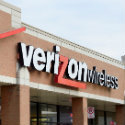Verizon said it will 'make available a service plan to Lifeline and other prepaid customers through TracFone that includes 5G service.' But the carrier didn't say which flavor of 5G it might offer.

Verizon promised to sell 5G services to low-income Americans through the government's Lifeline service. One of the company's top executives made the pledge as part of Verizon's efforts to obtain regulatory approval for its proposed $7 billion purchase of América Móvil's TracFone, first announced last year.
"Verizon and TracFone also reiterated that the transaction will allow Lifeline customers and other prepaid customers to benefit as Verizon's networks and services continue to advance. Within 6 months after the Transaction closes, Verizon will make available a service plan to Lifeline and other prepaid customers through TracFone that includes 5G service," Verizon told the FCC in a recent filing. "In addition, to help customers take advantage of the benefits of 5G, Verizon will increase the range of cost-effective 5G devices available to these consumers using commercially reasonable subsidy practices supported by regulatory flexibility."
The issue is clearly an important one to Verizon considering Ronan Dunne, CEO of Verizon Consumer Group, called Acting FCC Chairwoman Jessica Rosenworcel and other FCC officials last week to issue the proposal. A promise of 5G for Lifeline was not included in Verizon's previous filings on the topic.
However, Verizon did not specify whether the 5G it would offer through Lifeline would be the speedy kind or the slower kind. Verizon currently offers two flavors of 5G – one that's lightening fast and uses mid- and highband spectrum, and another that's not very fast and uses lowband spectrum. The distinction is important because Verizon has so far kept its speedy version of 5G exclusive to its premium, expensive plans.
Another look at Lifeline
The Reagan administration created the Lifeline program in the 1980s to provide poor Americans with phone service. The program provides recipients with a discount of up to $9.25 per month for telecom services, either wired or wireless. Americans can get the discount if they meet federal poverty guidelines or participate in programs like the Supplemental Nutrition Assistance Program (SNAP, or food stamps).
The program has taken on a new and more urgent dimension following the COVID-19 pandemic that forced many Americans to work and school from home. As a result, a number of lawmakers are working to increase federal spending on broadband, including on subsidies to help poor Americans afford Internet connections.
Indeed, Verizon and AT&T are looking to influence those efforts with new proposals that would modify the operation and parameters of Lifeline. "The funding mechanism for the Lifeline program is unsustainable as the only program available for low-income recipients," Verizon argued earlier this year.
T-Mobile is currently the only major wireless network operator to offer services through Lifeline. Verizon said it would join T-Mobile in doing so if it is allowed to purchase TracFone. TracFone, an MVNO that piggybacks on a number of wireless networks, currently offers services through Lifeline.
The FCC has not yet blessed Verizon's proposed purchase of TracFone, and it's unclear whether or when it might do so. Verizon and TracFone's owner continue to expect the deal to close in the third quarter.
Related posts:
— Mike Dano, Editorial Director, 5G & Mobile Strategies, Light Reading | @mikeddano
About the Author(s)
You May Also Like











